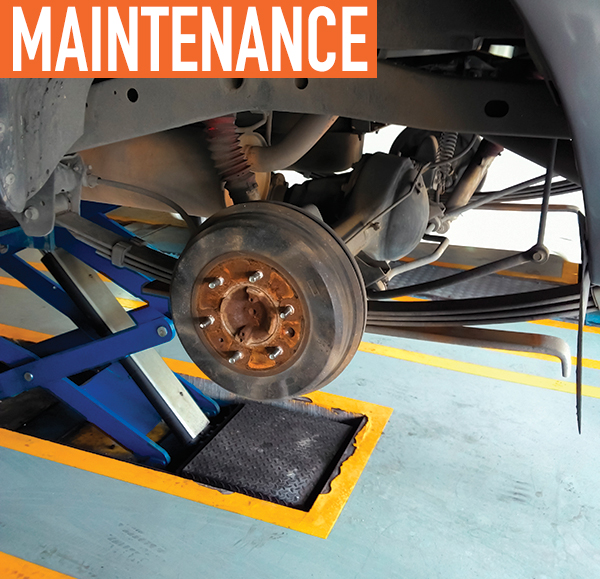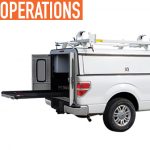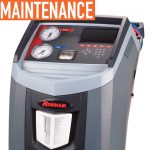When choosing brake technology, there are a few key factors to consider before making a decision: Find the right balance between top-quality pedal feel and affordable price, determine whether vehicle-use patterns demand any special brake coverage, consider the importance of a complete brake job, and find a brake manufacturer with a solid reputation. The following tips will help to ensure that your next brake job is ideal in terms of cost, safety, reliability, and comfort.
SORT YOUR PRIORITIES
The first key consideration is price point vs brake feel. Whether you choose to prioritize a pedal feel identical to that of your vehicle’s original equipment (OE) brakes or choose to prioritize low cost, you should have these two factors in mind before making a brake purchase.
Top-of-the-line brake products from reputable brake manufacturers can meet or exceed OE expectations, offering the same type of pedal feel as when the vehicle was brand-new. Like GRI Engineering & Development, Inc. (GRIE)—which offers the Bendix Brakes brand of automotive brake products—some manufacturers specialize top-quality brake product lines, producing a range of products that corresponds to OE brakes for each individual vehicle. In the Bendix Premium line, friction materials in each brake product have been tested against OE formulations to create a material that is comparable to—or sometimes even exceeding—the comfort and quality of the vehicle’s original brakes. Products like those in the Bendix Premium line offer the benefit of replicating OE quality without replicating the price tag of a dealership brake job.
If price is of greater concern than OE-quality comfort, then it is better to choose a brake product that is proven safe and provides a more economical option. For drivers on the second, third, or even fourth set of replacement brakes for a vehicle, especially those who don’t accrue a lot of mileage, price is often the most important characteristic of an ideal brake product, aside from safety. In this case, using the same example of the Bendix Brakes brand, the driver would be better suited purchasing brake products from the Stop by Bendix line, which features mid-grade friction formulations. These products ensure driver safety at a lower cost.

ASSESS COVERAGE NEEDS
Of course, there are some cases in which standard friction formulations—designed with average drivers’ vehicle use in mind—don’t quite measure up in terms of safety or comfort. Drivers who need their vehicles to perform well in severe-duty applications, like towing and hauling, can benefit from more robust friction materials to meet their more robust braking needs. This also applies to vehicles used in mountainous regions. These brake products are often semi-metallic, like the Bendix Fleet MetLok product line, and can dissipate heat more easily and deliver more friction.
High friction and better heat dissipation are also especially important for fleet vehicles, such as police cruisers, ambulances, and municipalities. These are not only heavier than other vehicles, but require the ability to brake more aggressively while still keeping drivers and passengers safe. In these types of applications, a harsher pedal feel is an acceptable tradeoff for safe, aggressive braking in any condition.
COMPLETE BRAKE JOB
Regardless of the brake products you choose for your vehicle, it is essential that you perform or request a complete brake job when replacing any worn brake components. This means that when changing brake pads, rotors should either be replaced or, if the rotors are still within specifications, thoroughly cleaned and resurfaced. New friction materials introduced in the last decade or so leave a thin film on the rotors, which helps to break in the new brakes, leading to improved brake performance. Replacing brake pads but ignoring rotor surfaces impedes this critical material transfer and can introduce problems such as noise, poor performance, and premature wear.
In addition to pads and rotors, it is important to ensure that the caliper and caliper hardware, piston, seals, and other components are all working properly and are adequately lubricated. If they are not, they should be re-lubricated, repaired, or replaced. Even technology as minor as the brake abutment clips has become advanced over the last decade or so, with spring steel under tension that can wear out if not replaced. When you opt for a complete brake job, you can rest assured that every component of your braking system is in top shape which, given that brake performance is critical to vehicle safety, is essential.
REPUTABLE MANUFACTURER
The final, and perhaps most important, tip to consider when choosing replacement brakes for your vehicle is to ensure that you purchase your brakes from a reputable manufacturer. Brakes are a safety-related product for your vehicle, as has already been discussed in this article, and it is important to be comfortable with your brake manufacturer. Each individual manufacturer creates and tests its own friction formulas, so there is a wide range of quality available on the market. It is important to choose a manufacturer with a long history of expertise, so you can be confident that your brake technology is the best and safest available to you.
Take the example of GRIE and Bendix Brakes: Bendix has been a part of the automotive brake industry for nearly a century and has a long history at the cutting edge of friction formulation and brake technology. Additionally, the brand now features an industry-leading latest generation of friction materials.
The Bendix product line is fully integrated from a manufacturing point of view—GRIE manufactures its own backing plates, hardware, shims, and more. Bendix is one of the only brands in the US automotive brake marketplace with this level of manufacturing integration, meaning GRIE has control over the quality of the Bendix brand products at every step of manufacturing. Without relying on sub-suppliers, the Bendix brand includes the highest quality, safest products possible.
Bendix products are also at the cutting edge of environmental concerns for automotive brake technology, with copper eliminated from the friction formulations of the Premium line of top-quality brakes. While other manufacturers are waiting until regulations force them to remove copper from their friction formulations, GRIE is leading by example, creating non-metallic friction formulations that exceed OE expectations.
Regardless of whether you choose a brake product for top performance and comfort or for its affordable price, whether your vehicles are used exclusively in average, undemanding applications or towing trailers up mountains, it is critical that you choose the safest possible brake products and ensure that those products are installed and maintained properly. With these tips, you can ensure a comfortable ride within your price range and keep your vehicle safe.
FOR MORE INFORMATION:
Ron Sherman has almost 20 years of experience in the aftermarket as a friction engineer. Ron’s grown up in the industry, having been involved in every step of the process from backing plate stamping to developing formulations throughout his career. Ron’s currently the engineering manager of Friction Products at GRI Engineering & Development, Inc.
_______________________________________________________________________
MODERN WORKTRUCK SOLUTIONS: OCTOBER 2016 ISSUE
Did you enjoy this article?
Subscribe to the FREE Digital Edition of Modern WorkTruck Solutions magazine.
![]()




